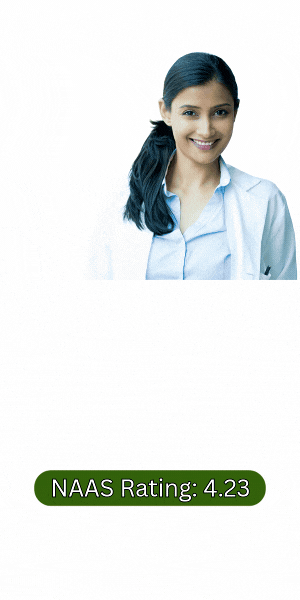
Air pollution is one of the world’s most serious environmental challenges. It silently affects millions of people each year, leading to respiratory diseases, cardiovascular issues, and even premature death. For scholars and researchers, pursuing a PhD in Air Pollution and Public Health offers a unique opportunity to make impactful contributions to science, policy, and society.
This blog explores why this area is crucial, what kind of research topics are available, and how PhD scholars can drive meaningful change through their studies.
The link between polluted air and health problems is well-documented. Major cities worldwide are battling smog, high PM2.5 levels, and increasing cases of asthma and lung cancer. According to the World Health Organization (WHO), air pollution contributes to nearly 7 million premature deaths annually.
PhD-level research in this domain can:
A PhD in this interdisciplinary field allows candidates to explore the science of pollutants, their sources, their interactions with human health, and how to mitigate their impact. Below are some of the most relevant and emerging areas of research:
This area involves studying how specific pollutants affect human health, particularly among sensitive groups such as children, elderly, and people with pre-existing conditions.
This domain centers on collecting real-time data on air pollution and using computational models to predict pollution levels and trends.
Epidemiology helps in understanding how exposure to air pollution correlates with disease occurrence in populations over time.
While much attention is given to outdoor air quality, indoor pollution is equally, if not more, dangerous—especially in developing countries.
This area focuses on analyzing the effectiveness of air quality regulations and ensuring that all communities benefit from cleaner environments.
This research explores how climate change and air pollution are interdependent, and how this relationship affects public health globally.
A cutting-edge area, this research investigates how pollution affects human DNA and gene expression, potentially leading to inherited disorders or long-term health conditions.
Here, research focuses on working with communities to reduce exposure risks and promote behavioral change.
PhD candidates can also work on inventing or refining technologies to reduce emissions or protect individuals from exposure.
PhD research in this field can lead to:
A PhD in Air Pollution and Public Health is not just a step forward in academic achievement—it’s a powerful tool to bring about social, environmental, and health transformations. With growing global concerns around pollution and health equity, researchers in this field are more important than ever.
1. Why should I pursue a PhD in Air Pollution and Public Health?
A PhD in this field allows you to work at the intersection of environmental science and public health, addressing global issues like respiratory diseases, climate change, and policy development. It equips you to create meaningful societal impact through research, innovation, and policy advocacy.
2. What are the key qualifications required to apply for a PhD in this field?
Typically, applicants should have a Master’s degree in Public Health, Environmental Science, Epidemiology, Environmental Engineering, or a related discipline. Research experience, a strong academic record, and a clear research proposal also strengthen your application.
3. What are the most promising research areas in this field?
Some emerging and impactful research areas include:
4. What tools or methods are commonly used in this research?
Researchers often use:
5. Can I conduct interdisciplinary research during my PhD?
Yes. This field is inherently interdisciplinary, involving environmental science, public health, epidemiology, data science, molecular biology, urban planning, and policy studies. Interdisciplinary research is often encouraged and supported.
6. What kind of career options are available after completing a PhD in this area?
Graduates can pursue careers as:
7. How does this research contribute to public policy?
PhD research can provide scientific evidence to shape air quality regulations, influence urban planning decisions, support pollution control strategies, and raise public awareness—ultimately leading to healthier communities and sustainable environments.
8. Are there any funding options for this PhD program?
Yes. Many universities, government bodies, and international organizations offer funding through scholarships, fellowships (like UGC NET-JRF, DST INSPIRE, or Fulbright), or funded research projects.
9. What challenges should I be prepared for during this research?
Some common challenges include:
However, these are also opportunities to innovate and solve real-world problems.
10. Can my PhD research have global relevance?
Absolutely. Air pollution is a global issue with transboundary effects. Whether your research focuses on a local city or a national policy, the findings often contribute to global frameworks and comparative studies, enhancing their international relevance.
 NAAS Rating: 4.23
NAAS Rating: 4.23  October 2025 Issue
October 2025 Issue  Impact Factor: 6.69
Impact Factor: 6.69  Submit Article
Submit Article 
|
Citation Indices
|
All
|
Since 2020
|
|
Citation
|
6164
|
5117
|
|
h-index
|
31
|
29
|
|
i10-index
|
201
|
165
|
|
Acceptance Rate (By Year)
|
|
|
Year
|
Percentage
|
|
2024
|
11.09%
|
|
2023
|
15.23%
|
|
2022
|
12.81%
|
|
2021
|
10.45%
|
|
2020
|
9.6%
|
|
2019
|
14.3%
|
|
2018
|
17.65%
|
|
2017
|
16.9%
|
|
2016
|
22.9%
|
|
2015
|
26.1%
|